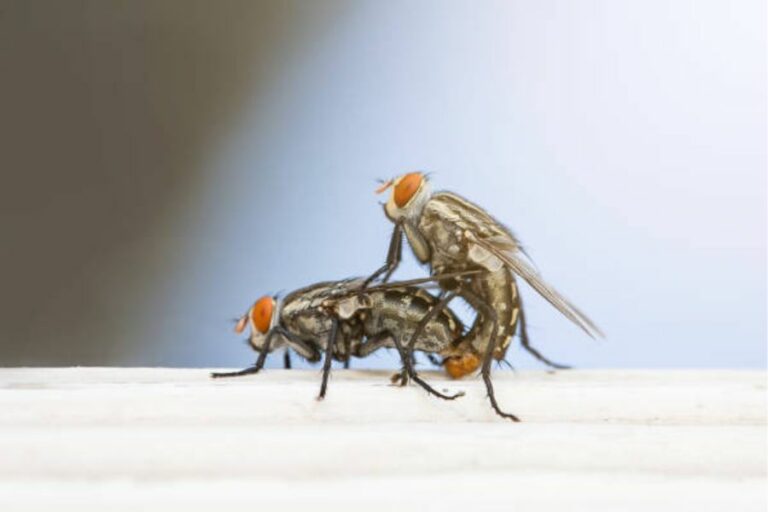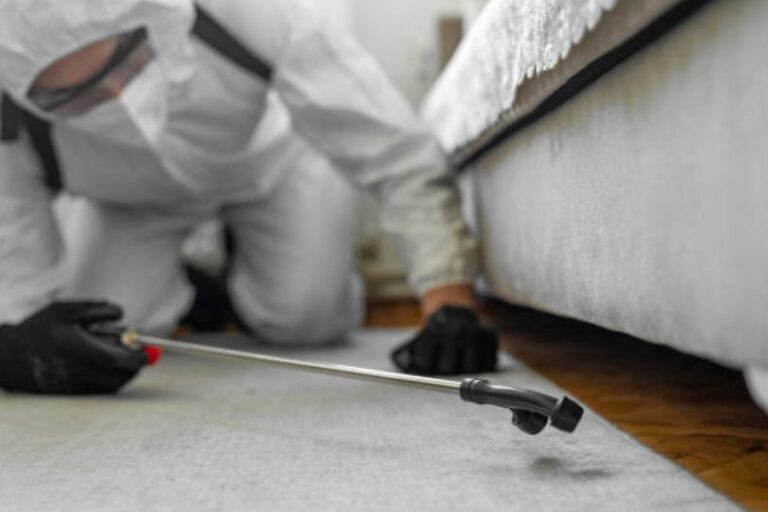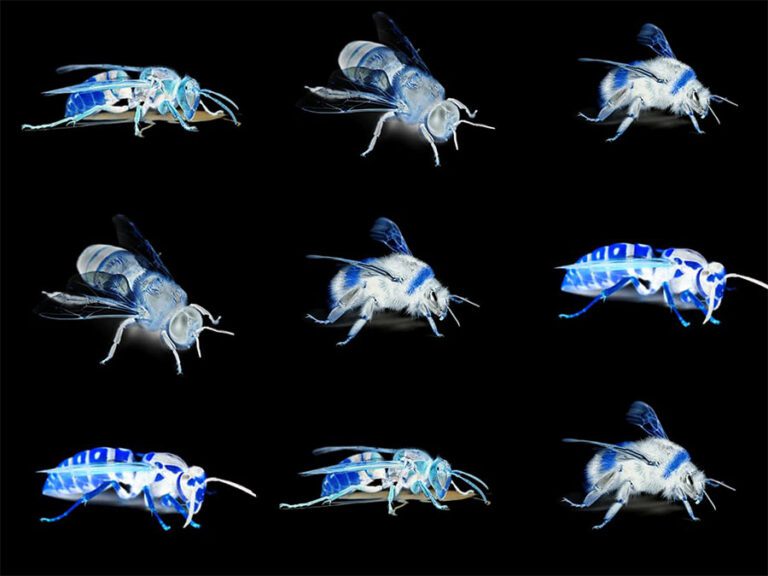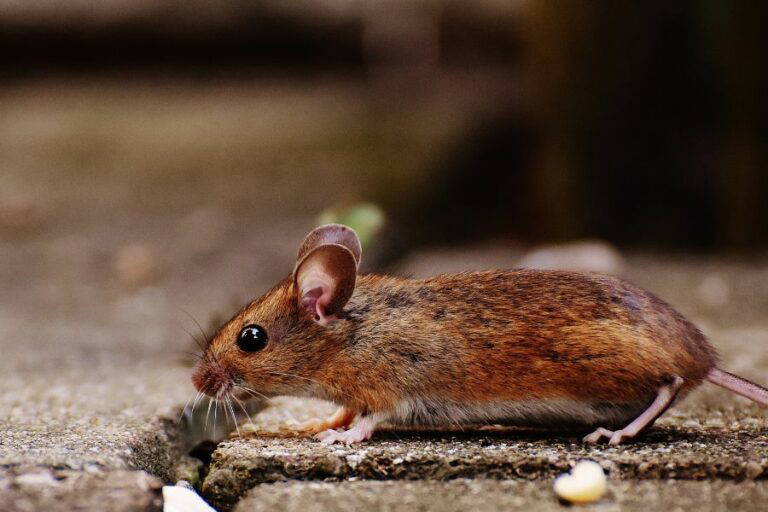8 Truthful Bedbug Infestation Questions Answered
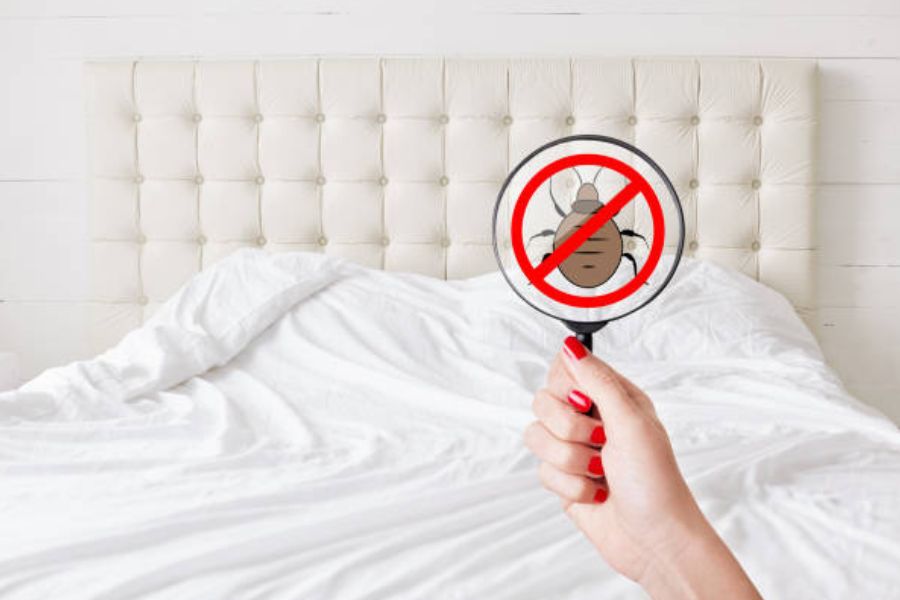
Curious about a bedbug infestation? We’ve got you covered. We’ve compiled the most common questions about bedbugs and consulted with pest control experts to provide you with the answers you need.
What are bedbugs, and how do they infest homes?
Bedbugs are small, reddish-brown insects that infest homes through various means, such as hitchhiking on luggage, clothing or furniture. They can also crawl through cracks and crevices and even travel along pipes and electrical wires, allowing them to spread quickly throughout the house. Once inside, bedbugs seek hiding spots near their human hosts, often found in mattresses, box springs, bed frames, and upholstered furniture.
Their flat bodies enable them to squeeze into tight spaces, challenging detection and elimination without professional assistance. To find these pests, conducting a thorough inspection in several key areas is crucial. Check headboards, bedframes (especially fabric frames and divan-styled beds), skirting boards, carpet edges, bedside tables, blankets, throws, house gowns, ceilings, wall joints, loose wallpaper or panelling, flooring, rugs, personal belongings, books, paper, and bins. Bedbugs can hide in these areas, taking advantage of crevices and tight spaces, primarily around the bed. Should you suspect a bedbug infestation, contacting a professional pest control service is highly recommended for prompt and practical solutions.
What are the signs of a bedbug infestation?
Detecting a bedbug infestation can be crucial in taking prompt action. Here are more details on the signs to look out for:
- Small, itchy, red bites on your body: Bedbug bites are often small, raised, and itchy. They typically appear in a line or cluster, as bedbugs tend to bite multiple times in one feeding session. The bites can be found on exposed areas of skin, such as the face, neck, arms, and legs.
- Bloodstains on sheets or pillowcases: Bedbugs feed on blood; after feeding, they may leave behind small bloodstains on your sheets or pillowcases. These stains are usually reddish-brown and can be seen as spots or smears.
- Dark spots (faecal matter): Bedbugs also leave behind dark spots, which are their excrement. These spots may appear on bedding, walls, or furniture, ranging from specks to more prominent stains. The faecal matter is typically dark brown or black and may smear when touched.
- A musty odour in the affected area: Bedbugs release pheromones, and in severe infestations, a musty or sweet odour may be noticeable. This odour is often described as a damp, unpleasant scent and is more prominent in areas where bedbugs are concentrated.
It’s important to note that not everyone reacts to bedbug bites, and some people may not exhibit any visible signs of being bitten. Additionally, these signs may vary in intensity depending on the level of infestation. If you notice any of these signs or suspect a bedbug infestation, you should seek professional assistance from a pest control service to identify and address the problem accurately.
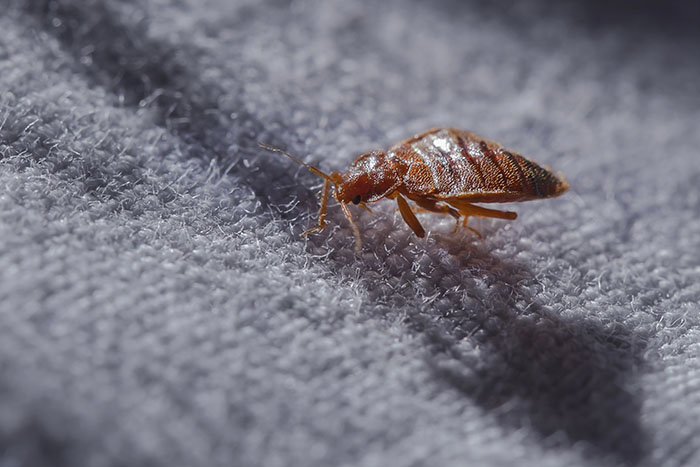
What should I do if I suspect a bedbug infestation?
If you suspect a bedbug infestation, it’s crucial to act promptly. Start by confirming the pest’s presence by carefully inspecting your bedding, furniture, and other hiding spots. However, DIY options often fail to fully address bedbug infestations due to their resilient nature and ability to hide in small spaces. That’s why contacting a professional pest control service specialised in bedbug extermination is crucial. They have the expertise to conduct a thorough inspection, develop an effective treatment plan, and guide preparation and post-treatment procedures. Following the advice of pest control professionals increases the likelihood of successfully eliminating bedbugs from your home and preventing re-infestation. Don’t hesitate to seek professional assistance for the best results.
How can I prevent a bedbug infestation from entering my home?
Preventing bedbugs from entering your home is crucial to avoid infestations. Here are more details and additional prevention measures:
- Inspect second-hand furniture or clothing: Before bringing any second-hand items into your home, thoroughly inspect them for signs of bedbugs. Look for live bedbugs, shed skins, dark spots (faecal matter), or eggs. Pay close attention to seams, crevices, and any upholstered areas. If you detect any signs of bedbugs, avoid acquiring the item or ensure proper treatment before bringing it inside.
- Use protective mattress covers and pillowcases: Encase your mattresses, box springs, and pillows with protective shells designed to encase bedbugs. These covers are made of a durable material with tightly woven fabric, preventing bedbugs from infesting these areas and making it easier to spot and address any potential issues.
- Avoid placing luggage or bags on the bed or floor while travelling: Keep your luggage and bags elevated and away from the bed or floor. Instead, use luggage racks, tables, or hard surfaces. Bedbugs can easily crawl onto your belongings if they are near infested areas.
- Regularly vacuum and clean your living space: Maintaining a clean, clutter-free living environment can help deter bedbugs. Vacuum regularly, paying particular attention to mattresses, upholstered furniture, and cracks and crevices where bedbugs may hide. Dispose of the vacuum bag immediately after use. Additionally, reduce clutter as much as possible to eliminate potential hiding spots for bedbugs.
- Seal cracks and crevices: Inspect your home for any cracks or crevices along walls, baseboards, and other areas where bedbugs could enter. Seal these openings using caulk or other appropriate sealants to minimize potential entry points.
- Be cautious with shared spaces: Exercise caution if you live in a multi-unit building or frequently visit shared areas, such as laundromats or public transportation. Be mindful of your surroundings and avoid placing personal items on shared furniture or floors.
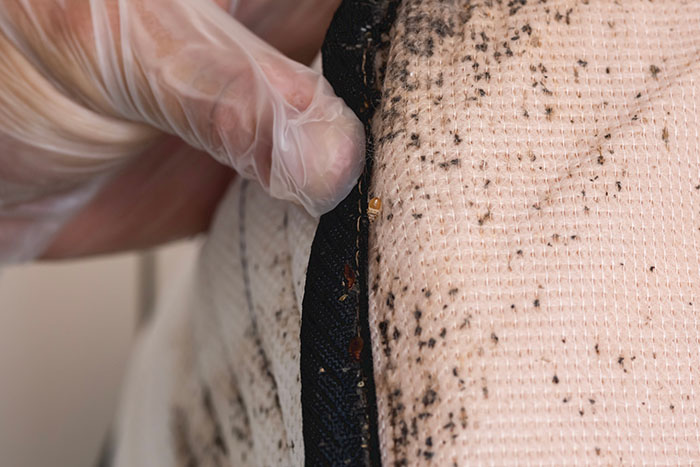
What are some DIY methods to control a bedbug infestation at home?
One DIY option to help control bedbugs is thorough cleaning and decluttering. Start by washing and drying infested bedding, clothing, and curtains at high temperatures. Vacuum your mattress, furniture, and carpets meticulously, focusing on seams, crevices, and cracks. After vacuuming, immediately dispose of the vacuum bag or empty the canister in a sealed plastic bag. Additionally, consider using mattress encasements designed to trap bedbugs and prevent them from infesting your mattress. However, it’s important to note that while these measures may help reduce bedbug populations, they may not eliminate the infestation. For more effective and long-lasting results, seeking professional pest control services is advisable.
How long does it take to eliminate a bedbug infestation?
The duration of bedbug treatment varies depending on the severity of the infestation. In most cases, multiple treatments are required to target all stages of bedbug development, typically spanning two to three visits over a few weeks. It is important to note that eliminating bedbugs can take time and patience. Regular monitoring and follow-up inspections are essential to ensure the infestation has been successfully eradicated. You can achieve effective and long-lasting results by staying vigilant and working closely with a professional pest control service.
What can I do to prevent a bedbug infestation in my home?
To prevent a bedbug infestation from returning:
- Maintain good hygiene by regularly cleaning and vacuuming your living space.
- Inspect bedding, furniture, and potential hiding spots for signs of bedbugs.
- Be cautious with second-hand items, thoroughly inspecting and treating them before bringing them into your home.
Are bedbug bites dangerous?
While bedbug bites are generally not dangerous, they can cause discomfort, itching, and skin irritation. Occasionally, individuals may develop an allergic reaction or secondary infections from scratching the bites excessively. Seeking medical advice is recommended if you experience severe reactions or persistent symptoms.
